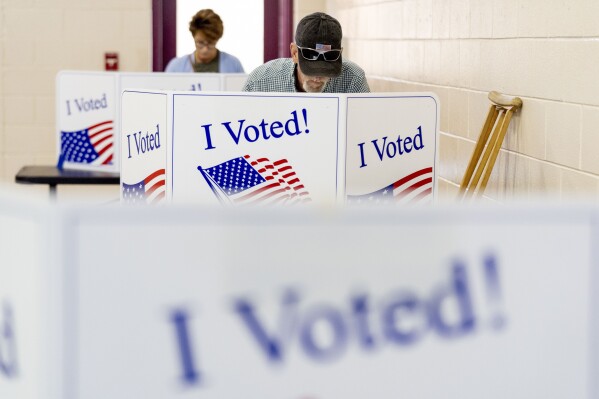Why AP called South Carolina for Trump: Race call explained
WASHINGTON (AP) — Former President Donald Trump has easily won the South Carolina primary, dealing former U.N. Ambassador Nikki Haley a resounding defeat in her home state.
The Associated Press declared Trump the winner as polls closed statewide at 7 p.m. The AP based its race call on an analysis of AP VoteCast, a comprehensive survey of Republican South Carolina primary voters. The survey confirms the findings of pre-Election Day polls showing Trump far outpacing Haley statewide.
Declaring a winner as polls close based on the results of AP’s VoteCast survey — and before election officials publicly release tabulated votes — is not unusual in heavily lopsided contests like Saturday’s primary.
VoteCast results show Trump winning on a scale similar to his earlier victories in every contest so far where he appeared on the ballot. In South Carolina, he is winning by huge margins in every geographic region of the state, from Upcountry in the north to Low Country on the Atlantic coast.



The survey also shows Trump with sizable leads across the state’s political geography, winning among Republican primary voters from areas that vote heavily Republican in general elections to those that vote heavily Democratic, as well as everywhere in between. Haley’s strongest support according to VoteCast was among voters with postgraduate degrees, but they make up a small share of the overall electorate.
Haley’s likeliest path to victory relied on posting strong numbers in more Democratic-friendly areas, while staying competitive in traditionally Republican areas. In Haley’s last competitive GOP primary in the state in 2010, some of the areas where she performed best were in counties that tend to support Democrats in general elections. But VoteCast shows Haley not performing anywhere near the level she needs to pull off an upset.
Another key metric is votes cast before Election Day, which tend to be among the first votes reported of the night.
Since the issue of early voting became highly politicized in the 2020 presidential election, pre-Election Day votes have skewed Democratic, while Election Day votes have skewed Republican. With much of Haley’s support coming from more moderate voters this campaign, she would have needed a strong showing among early voters in order to withstand the votes later in the night from more conservative voters who voted on Election Day. While VoteCast showed Haley performing slightly better among early voters than she did among Election Day voters, she trailed badly behind Trump in both groups.
When all the votes are counted, Trump may come close to doubling the 33% he received in his 2016 South Carolina victory against a far more competitive six-way field. That year he carried 44 of 46 counties, all but Richland and Charleston, the state’s second- and third-most populous.
VoteCast provides a detailed snapshot of the electorate and helps explain who voted, what issues they care about, how they feel about the candidates and why they voted the way they did.
Disclaimer: The copyright of this article belongs to the original author. Reposting this article is solely for the purpose of information dissemination and does not constitute any investment advice. If there is any infringement, please contact us immediately. We will make corrections or deletions as necessary. Thank you.

